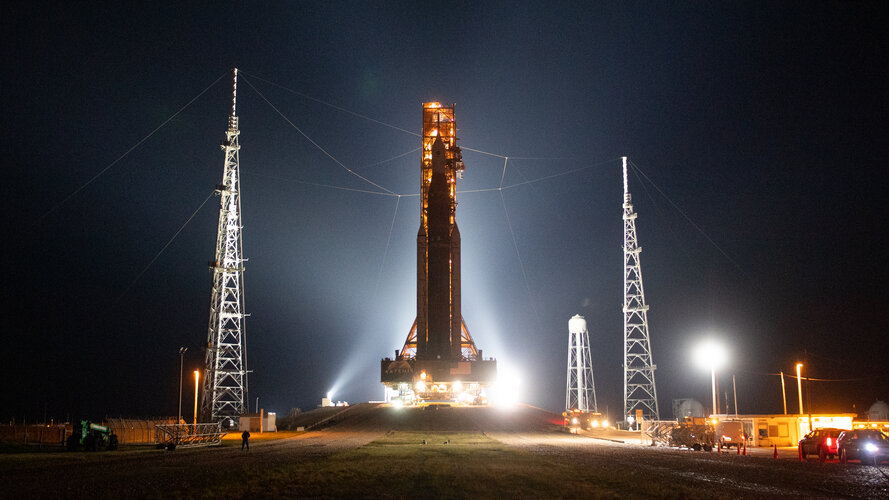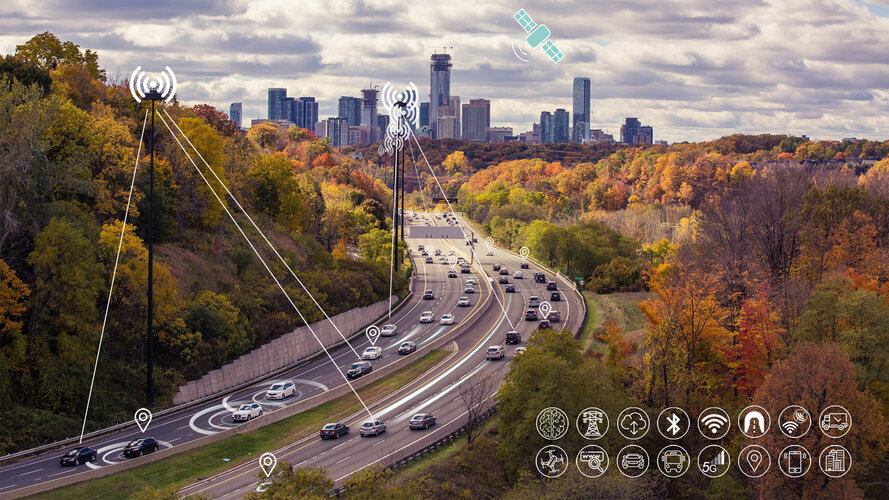
Copernical Team
Media briefing: Artemis I getting ready for launch
 Video:
00:57:00
Video:
00:57:00
The Artemis I mission is almost ready for launch: it will send an uncrewed spacecraft beyond the Moon and back.
Watch the replay of this virtual Q&A to learn more about Europe's contribution to the mission: ESA is overseeing the development of the European Service Module, that provides air, electricity and propulsion to the spacecraft. Participants to this media briefing include Josef Aschbacher, ESA Director General ; David Parker, ESA Director for Human and Robotic Exploration ; Jean-Marc Nasr, Airbus EVP Space Systems and Marc Steckling, Airbus Head of Space Exploration
Plate tectonics drives ocean oxygenation
 Until now, it has been assumed that the oxygenation of the oceans over geological timescales has mainly been driven by atmospheric oxygen levels. However, a new study published in Nature on June 27 2022 suggests otherwise.
Work by scientists at the Biogeosciences Laboratory (CNRS/UBFC), together with their colleagues at the University of California's Department of Earth and Planetary Scien
Until now, it has been assumed that the oxygenation of the oceans over geological timescales has mainly been driven by atmospheric oxygen levels. However, a new study published in Nature on June 27 2022 suggests otherwise.
Work by scientists at the Biogeosciences Laboratory (CNRS/UBFC), together with their colleagues at the University of California's Department of Earth and Planetary Scien US Navy military sealift command awards Inmarsat 10-year wideband follow-on contract
 Inmarsat Government has announced that the Defense Information Systems Agency (DISA) has awarded Inmarsat Government the U.S. Navy Military Sealift Command (MSC) Next Generation Wideband (NGW) Follow-On (FO) Contract for worldwide end-to-end commercial satellite communications services.
An Indefinite-Delivery, Indefinite Quantity (IDIQ) contract, the ceiling value of the award is $578M ove
Inmarsat Government has announced that the Defense Information Systems Agency (DISA) has awarded Inmarsat Government the U.S. Navy Military Sealift Command (MSC) Next Generation Wideband (NGW) Follow-On (FO) Contract for worldwide end-to-end commercial satellite communications services.
An Indefinite-Delivery, Indefinite Quantity (IDIQ) contract, the ceiling value of the award is $578M ove Wobbling droplets in space confirm late professor's theory
 At a time when astronomers around the world are reveling in new views of the distant cosmos, an experiment on the International Space Station has given Cornell researchers fresh insight into something a little closer to home: water.
Specifically, the space station's microgravity environment illuminated the ways that water droplets oscillate and spread across solid surfaces - knowledge that
At a time when astronomers around the world are reveling in new views of the distant cosmos, an experiment on the International Space Station has given Cornell researchers fresh insight into something a little closer to home: water.
Specifically, the space station's microgravity environment illuminated the ways that water droplets oscillate and spread across solid surfaces - knowledge that ESA technology leading to safer, smarter European roads

An agreement signed yesterday looks to extend the use of ESA space technology along European roads. The Agency’s Navigation Directorate has finalised a Memorandum of Intent with ERTICO, the organisation for the European Road Transport Telematics Implementation Coordination, a public-private partnership focused on the development, promotion and connection of intelligent road systems and services.
Black hole collisions could help us measure how fast the universe is expanding
 A black hole is usually where information goes to disappear-but scientists may have found a trick to use its last moments to tell us about the history of the universe.
In a new study, two University of Chicago astrophysicists laid out a method for how to use pairs of colliding black holes to measure how fast our universe is expanding-and thus understand how the universe evolved, what it is
A black hole is usually where information goes to disappear-but scientists may have found a trick to use its last moments to tell us about the history of the universe.
In a new study, two University of Chicago astrophysicists laid out a method for how to use pairs of colliding black holes to measure how fast our universe is expanding-and thus understand how the universe evolved, what it is 103rd successful rocket launch breaks record
 The Long March carrier rocket family, China's backbone launch vehicle fleet, has set a new record for successful consecutive launches after a Long March 2D launch over the weekend, according to the China Aerospace Science and Technology Corp, the country's leading space contractor.
The rocket blasted off at 1:37 am Saturday from the Xichang Satellite Launch Center in Sichuan province and l
The Long March carrier rocket family, China's backbone launch vehicle fleet, has set a new record for successful consecutive launches after a Long March 2D launch over the weekend, according to the China Aerospace Science and Technology Corp, the country's leading space contractor.
The rocket blasted off at 1:37 am Saturday from the Xichang Satellite Launch Center in Sichuan province and l China launches new satellite via Kuaizhou 1A carrier rocket
 China on Tuesday successfully launched a new satellite into space from the Xichang Satellite Launch Center in Southwest China's Sichuan province.
The Chuangxin-16 satellite, developed by the Chinese Academy of Sciences, was launched at 10:36 am (Beijing Time) by a Kuaizhou 1A carrier rocket and entered the planned orbit successfully.
The satellite will mainly be used for scientific e
China on Tuesday successfully launched a new satellite into space from the Xichang Satellite Launch Center in Southwest China's Sichuan province.
The Chuangxin-16 satellite, developed by the Chinese Academy of Sciences, was launched at 10:36 am (Beijing Time) by a Kuaizhou 1A carrier rocket and entered the planned orbit successfully.
The satellite will mainly be used for scientific e Skyrora completes second stage static fire engine test
 The first vertical rocket launch from British soil moved a vital step closer this month as UK rocket company Skyrora successfully completed the static fire test of the second stage of its flagship Skyrora XL orbital vehicle.
The monumental event, at Discover Space UK at Machrihanish Airbase on the Mull of Kintyre, was the largest integrated stage test in the UK for 50 years, since the days
The first vertical rocket launch from British soil moved a vital step closer this month as UK rocket company Skyrora successfully completed the static fire test of the second stage of its flagship Skyrora XL orbital vehicle.
The monumental event, at Discover Space UK at Machrihanish Airbase on the Mull of Kintyre, was the largest integrated stage test in the UK for 50 years, since the days Breaking in a new planet
 The harder you hit something - a ball, a walnut, a geode - the more likely it is to break open. Or, if not break open, at least lose a little bit of its structural integrity, the way baseball players pummel new gloves to make them softer and more flexible. Cracks, massive or tiny, form and bear a silent, permanent witness to the impact.
Studying how those impacts affect planetary bodies, a
The harder you hit something - a ball, a walnut, a geode - the more likely it is to break open. Or, if not break open, at least lose a little bit of its structural integrity, the way baseball players pummel new gloves to make them softer and more flexible. Cracks, massive or tiny, form and bear a silent, permanent witness to the impact.
Studying how those impacts affect planetary bodies, a 